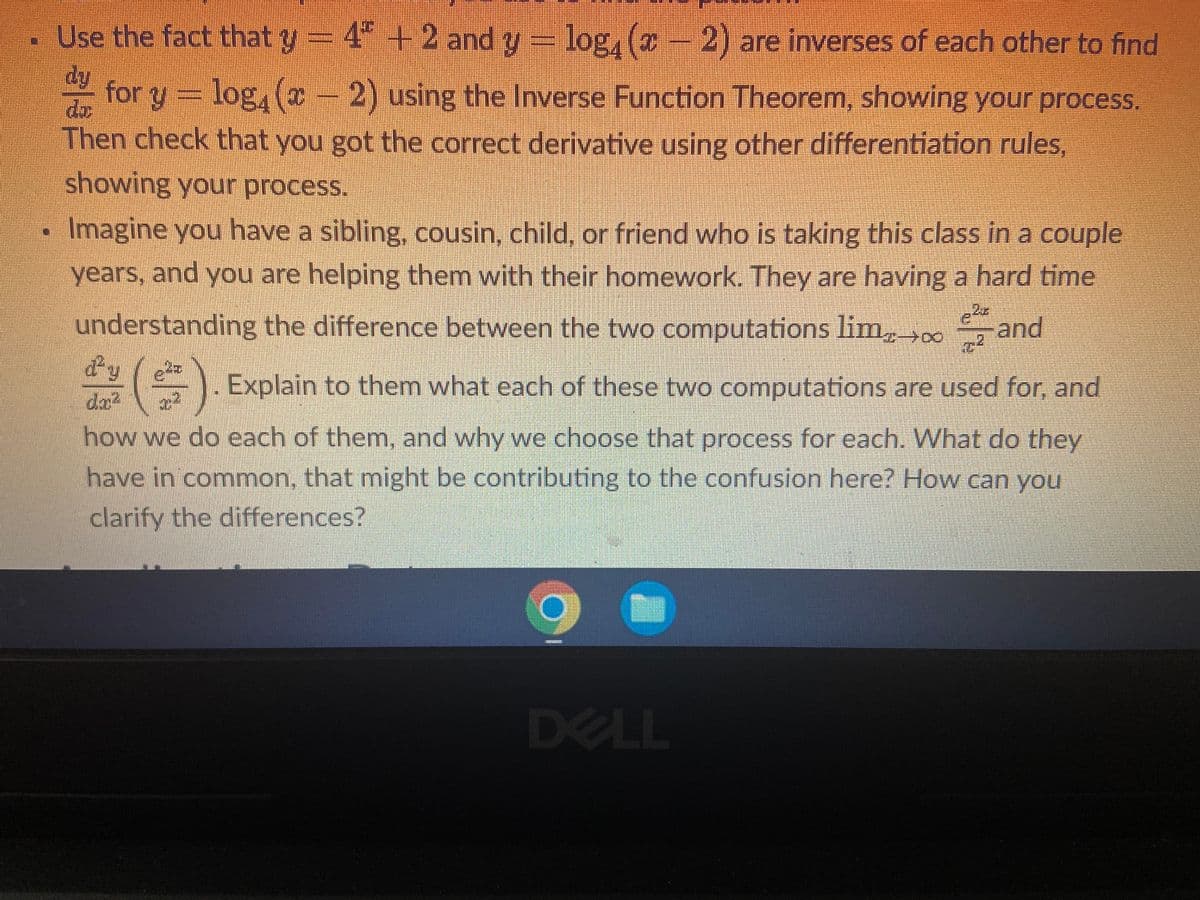Use the fact that y = 4 + 2 and y = log4 (x - 2) are inverses of each other to find dy for y = log4 (x - 2) using the Inverse Function Theorem, showing your process. da Then check that you got the correct derivative using other differentiation rules, showing your process.
Use the fact that y = 4 + 2 and y = log4 (x - 2) are inverses of each other to find dy for y = log4 (x - 2) using the Inverse Function Theorem, showing your process. da Then check that you got the correct derivative using other differentiation rules, showing your process.
Chapter2: Functions And Their Graphs
Section2.3: Analyzing Graphs Of Functions
Problem 6ECP
Related questions
Question
I am looking for help on the top bullet point that begin with: Use the fact that y=4^x+2.....

Transcribed Image Text:Use the fact that y - 4ª + 2 and
y = log, (z − 2) ar
4ª + 2 and y = log₁ (x − 2) are inverses of each other to find
dy
for y = log, (x − 2) using the Inverse Function Theorem, showing your process.
Then check that you got the correct derivative using other differentiation rules,
showing your process.
Imagine you have a sibling, cousin, child, or friend who is taking this class in a couple
years, and you are helping them with their homework. They are having a hard time
understanding the difference between the two computations limand
$($) Explain to them what each of these two computations are used for, and
how we do each of them, and why we choose that process for each. What do they
have in common, that might be contributing to the confusion here? How can you
clarify the differences?
C
DELL
Expert Solution
This question has been solved!
Explore an expertly crafted, step-by-step solution for a thorough understanding of key concepts.
Step by step
Solved in 3 steps

Recommended textbooks for you

